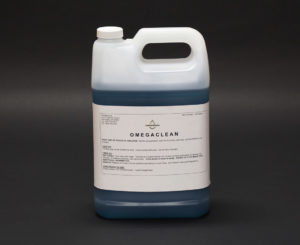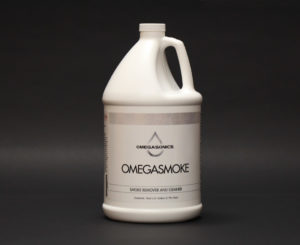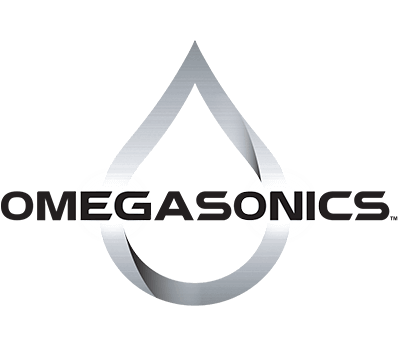[seopress_breadcrumbs]
Ultrasonic Cleaning Solutions
As ultrasonic cleaning technology was developed, it was discovered that if surface tension is reduced, cavitation levels increase. Ultrasonic cleaning solutions used with ultrasonic cleaning machines contain ingredients specially designed to increase the effectiveness of the process. These are called surfactants and they lower the surface tension of water.
General-Use Soap Solutions

1-Gallon OmegaClean Ultrasonic Cleaning Soap is our most versatile ultrasonic cleaning solution.
These solutions have a high alkaline content and are designed to remove a number of contaminants from metals, plastics and fabrics, depending on their formulation. Soap-based metal cleaners will remove oil, grease and carbon deposits. Those formulated for use with plastic and fabric items won’t clean oil-based deposits from these materials.
Descalers
Descaling detergents are formulated to clean metals laden with corrosion, rust, hard mineral deposits or heat scale. They are designed to help restore parts that have been in service in hard water or high-humidity environments. These solutions are acidic in nature.
Enzyme Detergents
Enzymes are used to degrease stainless steel, aluminum, brass and titanium parts, and can be more effective than general-use soaps when removing oil and grease. They are designed to clean heavily oiled surfaces when an oil-free environment is preferred or required. They also can be used effectively to remove biological contaminants from medical, surgical, dental and optical tools. Enzymes typically consume oil residue and digest it off as carbon dioxide.
Low pH Cleaners
Low pH or acidic, cleaners come in a number of formulations and can be helpful in several ultrasonic cleaning applications. Citrus-based cleaners clean and protect metals from the effects of chemicals. Some of the stronger low pH cleaners may damage certain materials, specifically aluminum, copper and brass. Citric acid solutions are used to passivate stainless steel and titanium by removing the free iron molecules from the surface of the metal to help prevent future corrosion such as rust.
Specialty Detergents

OmegaSmoke is a broad-use solution for smoke removal
Some solutions are formulated to clean specific contaminants like smoke, soot and certain odors. Although these specialty detergents will work very effectively when used in certain application, they can be harmful or ineffective when used outside of their intended use.
There are several additional considerations when determining if or how to use solutions with your ultrasonic cleaning application:
Longevity
Some solutions have a longer lifespan than others, which helps decrease long-term cost, but all solutions have their pros and cons. For example, when removing oil and coolants, users must choose between using an emulsifier solution or separating detergent. An emulsifier holds oil in suspension within the fluid so it does not float to the surface of the fluid in the tank. It is more effective at removing the oil, but it doesn’t last as long; once the solution is saturated with oil, it is no longer effective. A separator can remain effective for up to three months or longer. However, it cleans less effectively and, since oil rises to the surface of the tank, users risk recontamination during item removal unless filtration systems—overflow weirs or surface spargers—are added to the unit.
Disposal
Most ultrasonic cleaning baths are environmentally friendly and water-based, but, depending on the solution used and the contaminant removed, various methods of waste disposal may be required. Most ultrasonic cleaning baths are 92-95 percent water, and wastewater evaporators will reduce the amount of material requiring disposal by that amount. These solutions also often can be effectively neutralized or filtered until it can be released into the sewer system safely and legally. Some companies pay waste management firms that dispose of their materials in drums.
Heat
Solutions are often used in combination with heat, which effectively eliminates entrapped air in the water tank. For most applications, a temperature of 122-149 °F (50-65 °C) is effective. However, for some medical applications it is generally accepted that solutions should be used at temperatures below 100 °F (38 °C) to prevent protein coagulation.

